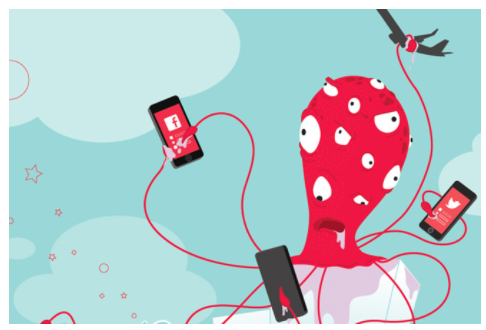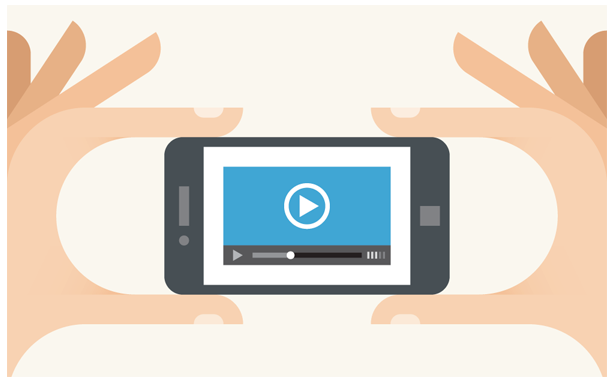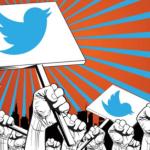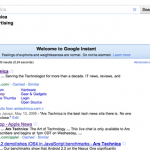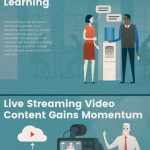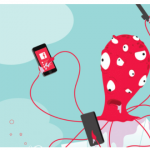Fact-Checking the Social Media Predictions of 2016
— December 26, 2016
What a year.
We’ve seen channels come and go (RIP Vine and Peach). We saw social media play a big role in the U.S. presidential elections. Fake news continues to rock the industry, especially since 85% of people now rely on Facebook for their morning news.
We’ve also seen Instagram and Snapchat become way more sophisticated and robust over the last few months. Instagram added increased video functionality that keeps users in-app and Snapchat beefed up their ad offerings by adding in location data from Foursquare and building out a program called Snapchat Partners.
As social grows increasingly pay to play and the ecosystem grows ever crowded, it will become more important for marketers to build out a paid social media strategy.
But before we start taking a look at trends for the coming year, let’s first take a look back at how social media has evolved this year.
At the beginning of 2016, we tapped some experts to share their predictions for social media in 2016. Here’s what came true and what didn’t:
1) Social Goes Omnichannel: True
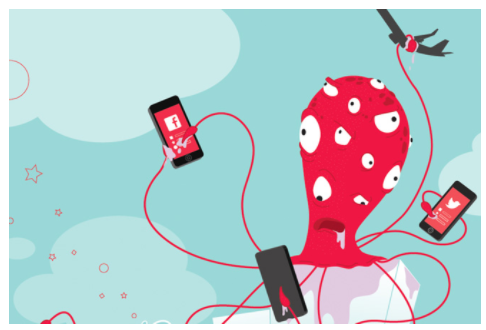
Consumers are more connected than ever. Each social channel serves a different purpose. There’s Twitter for consuming news and expressing your opinions in under 140 characters. Instagram often acts as a visual diary. Snapchat offers users a way for quick on-the-go messaging.
This year, we saw social channels fighting to expand their slice of the user pie. These platforms rolled out new features to satisfy users growing needs and keep users in-app.
What you need to know:
– Instagram Released Stories: Instagram released Instagram Stories, a disappearing video-messaging feature that looks very similar to Snapchat. On Instagram, content can still be posted permanently on the feed or as a story which is available for 24 hours before disappearing.
– Facebook’s All-in-One Inbox: Facebook rolled out an update to their Pages Manager that integrates Facebook, Instagram, and Messenger interactions all in one place. Page admins can now see and reply to all messages across these three platforms from one central inbox.
– Snapchat & Foursquare Joined Forces: In November, Snap Inc. entered a deal to access Foursquare’s location data. This deal unlocks a wealth of possibilities for Snapchat, possibly making geotargeting filters more sophisticated since Foursquare compiles data such as GPS, WiFi and Bluetooth.
– Facebook Launches Marketplace: Marketplace is a new destination for users to buy and sell items with people in their community. This update was one of the many new features Facebook released at the beginning of Q4 2016.
2) Social Commerce Blows Up: False
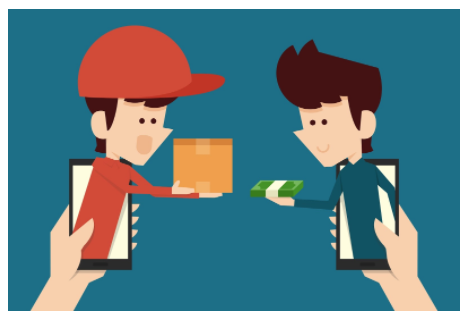
Photo from Smartphone Technology
As much hype as there is around social commerce, we still didn’t see it take off in 2016. Research shows that fewer than 20% of global social media users are interested in using buy buttons on social networks. Experts suggest that it’s because there still aren’t enough integrations that help facilitate the journey from deciding to purchase through checkout.
“Most companies provide an inconsistent experience across channels, which reflects the complexities of integrating the point of sale with marketing automation, content management, CRM and other critical sales tools,” says Raul Castanon-Martinez, senior analyst at 451 Research.
This experience might become more seamless in 2017, though. We’ve seen social media channels invest heavily in eCommerce features this year, with Facebook Messenger Bots, Instagram’s in-app “Shop Now” button, and more.
What you need to know:
Facebook Messenger: Companies can now use Facebook Messenger to update shoppers about purchases and to create a more personalized customer service experience. Everlane uses Facebook Messenger to make it easier for their customers to shop for the right styles and make for an easier on-the-go checkout experience.
Facebook Marketplace: With Messenger and Marketplace together, Facebook is training users to get used to shopping on the platform. With 1.44 billion active users on Facebook each month, marketers have a large audience base to tap into with these new social commerce tools.
Instagram Sponsored Ads: Sponsored Ads are native ads that look just like a standard Instagram post. Instagram offers a range of CTAs such as “Learn more,” “Download,” “Install Now,” “Shop Now,” “Sign Up,” “Buy” and more.
3) Social Make A Serious Video Push: True
If we had to sum up 2016 in one word, it’d probably be “video.” Snapchat doubled down on paid ads. Instagram rolled out updates that make it a much bigger player in the video space.
Research shows that video will account for 69% of all internet traffic by 2017. And with good reason – consumers are 64% more likely to purchase after watching a video. Brands are investing more heavily in organic and paid video content and social channels are quickly evolving to fit this need.
What you need to know:
Snapchat Cashes in With Snapchat Partners: Earlier this year, Snapchat rolled out its much anticipated ad partner program, Snapchat Partners. Snapchat Partners is an API (application programming interface) that connects 20 large tech companies in a way that makes it easier for brands to buy ads and tell stories on the platform. Snapchat’s ad partner program is so much more than a move to secure revenue. It’s yet another sign that brands can’t ignore the role the app plays in marketing.
Instagram Goes Live: An addition to the platform’s Snapchat-like Stories update in August, this update now allows users to stream live from Instagram. To launch a live video, all you have to do is head over to Stories and swipe right from the feed. Once you finish a stream, you can choose to send it to an individual or a group of friends or followers. Like Stories, Live Video will also show up on the bar the top of the feed.
4) Analytics Beyond The Click: True
Almost all consumers (90%) of U.S. households own three or more devices. Users spend an average of 21 minutes a week on LinkedIn, 89 minutes a month on Pinterest, and 50 minutes a day on Facebook.
In this fragmented digital ecosystem, it’s important for brands to know where their customers are and to be present across all of those channels and devices.
At the beginning of 2016, we predicted that marketers would start looking beyond the click and more at the big picture. Which platforms are consumers engaging on? When are they most engaged? How can we keep users coming back?
This year, we’ve seen social media updates address these questions. Facebook’s all-in-one inbox helps marketers easily engage with their communities across multiple channels and identify cross-over users.
Links in Instagram Stories is a big step forward. Previously, the only place you could share a clickable link was in the bio. In order for brands to prove the effectiveness of Instagram, it will be increasingly important to drive traffic out of the platform and track ROI through the link.
What you need to know:
Links Come To Instagram: In November, Instagram announced that links would start appearing in Instagram Stories. For now, only major brands, celebrities, and influencers will get links first.
Facebook’s All-in-One Inbox: Facebook’s Pages Manager now integrates Facebook, Instagram, and Messenger interactions all in one place.
5) Twitter Becomes The Next Myspace: False
Last year, marketing sociologist Richard Kelleher said, “I am a Twitterholic, but in past year I’ve seen Twitter becoming another MySpace. In other words irrelevant.”
At the end of 2015, Twitter saw its user growth stall. The 1.4% growth the channel saw during the last three months of 2015 was the lowest on record. For the first time ever, Twitter’s user growth also fell below that of Facebook’s.
But while it’s true that users now spend an average of 2.7 minutes a day on Twitter’s mobile app, compared to Facebook’s average of 30 plus minutes a day, it’s still too early to call it quits on the platform.
Twitter has taken many steps this year towards re-engaging their platform. From adding QR codes, to reinforcing privacy and security, to relaxing their 140-character word count, Twitter has shown that it’s willing and able to evolve.
What you need to know:
New Character Count: Twitter’s update to their character count is a nod to the changing landscape where social channels are all fighting to make their user experience stickier.
CEO Jack Dorsey says the new character count gives users “more utility and power.” The extra characters removes friction from using rich media and makes it easier for new users to adopt the channel, since most other platforms don’t have similar restrictions. Items dropped from the character count include images, links, and the @ symbol.
‘Muted Words’ Filter: Twitter has long been known for trolls. This problem has only escalated in recent years. It was even rumored that the platform was having trouble finding a buyer because of complaints from users that the platform wasn’t taking action against harassment.
In November, Twitter took a step towards addressing abuse and creating a safer space for users. The platform rolled out a ‘Muted Words’ filter that allows users to select offensive words or content and hide it from their notifications.
6) Influencer Budgets Get Bigger: True

Image from ILoveFashionRetail.com
Brands have ramped up their influencer marketing spend over the past two years, with budgets now ranging from $ 5,000 to $ 25,000.
We’ve seen marketers become more comfortable with influencer marketing this year, with 73% of marketers reporting that they’ve allocated budget for influencer partnerships.
More consumers are also becoming influencers. Micro influencers are on the rise, with research showing that once a big influencer reaches a critical mass of followers, engagement begins to decrease. The idea is that instead of activating one larger influencer, brands instead team up with 30 to 40 smaller influencers for the same amount of budget. These campaigns can end up converting at an even higher level.
As we kick off 2017, brands will start thinking more about new ways to approach influencer marketing and how to tie this back to their bottom line.
What you need to know:
How To Track and Prove ROI: We recently wrote a guest post on KPS Digital’s blog about how to set goals, monitor audience growth, check traffic referrals, and more. Learn how to track how influencer marketing affects your bottom line.
Creating An Influencer Marketing Program: We rounded up a guide with everything you need to find the right influencers, build your first campaign, and keep your program running. Whether you’ve already built out a well-rounded influencer marketing program or have yet to get started, there’s something for everyone in this guide.
Scaling The Walled Gardens
Social channels are evolving a lot and will continue to grow in 2017.
We know video will continue to play a big role. We know that we should keep an eye out for social commerce. We know that influencer marketing is something to experiment with.
But the biggest trend to come is something that we’ve already been doing for a long time. Putting the user first.
As the world of social media becomes more complex, consumers will be opening up their hearts and their wallets to brands who are most human. We recently heard Everette Taylor, CMO of Skurt talk about this in our inaugural CMO 2.0 Panel, “Navigating the Multichannel Maze in 2017.”
“I think it’s about taking time to really get to know your customers. I don’t think enough companies really do that. Just talk to them. Just have conversations with people. Our own CEO here at Skurt had 12 calls with some of our top customers last week. We discovered things that we didn’t know about our business,” Everette says.
The customer journey is a maze, with platforms trying to keep users in-app and consumers hopping between multiple channels and devices. That’s why we’re so focused on the link here at Bitly. Every click, tap, and swipe is a link. Which means we can use the link to see clear across the internet. It gives us a window into understanding the customer experience. We can understand what our audience likes to engage with, what channels they’ve been on, and where they will go next. And that’s the first step to having a conversation: listening.
Brands who tune in to users’ needs and make it easy to engage will finish first in 2017.
Digital & Social Articles on Business 2 Community
(49)

